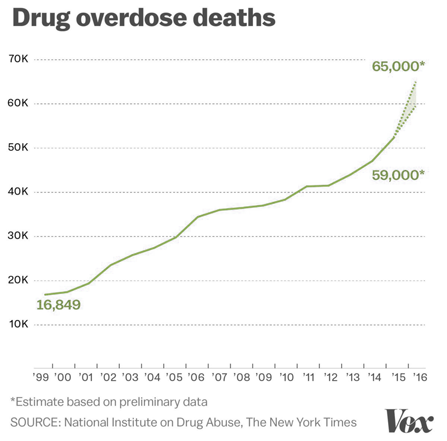Overprescribing Trends for Opioid Painkillers—We Need Prescribing Reform Now

Perhaps the most prevalent factor of 21st-century drug addiction in the United States is that the majority of addicts are not hooked on illegal drugs. They are hooked on legal, supposedly safe, supposedly helpful, pharmaceutical drugs. This is the greatest surprise of them all, that the drugs we were all promised were safe are actually a whole lot riskier than we thought they were. Unfortunately, doctors across the nation believed all of the same lies that we did, and as a result, they prescribed these drugs with far too much regularity and in far greater dosages than what was needed. The problem persists to this day.
For some insight to just how risky and dire this problem is, consider that, of the twenty-four million Americans who are addicted to drugs and alcohol, more than twelve million of them are hooked on prescription drugs. Not only is more than twelve percent of the entire U.S. population that is over the age of twelve addicted to drugs and alcohol, but most of them are hooked on legal, pharmaceutical drugs!
Concerning Statistics on Opioid Overdose Rates

The Centers for Disease Control and Prevention keeps a close watch on drug use trends and statistics, year after year. Needless to say, the organization is very concerned about where drug trends are going, as recorded overdose deaths have increased by more than three hundred percent in the last twenty years.
According to the Centers for Disease Control and Prevention, more than six-hundred and thirty-thousand Americans have lost their lives to drug overdoses since 1999. All told, about sixty-six percent of those overdose deaths have been from opioid drugs, mostly from pharmaceuticals. In 2016, the number of people who lost their lives from opioid overdoses was five-hundred percent greater than what that same number was in 1999. The CDC has been able to prove that we are in the midst of a prescription drug addiction epidemic.
The Centers for Disease Control and Prevention Insists on Better Prescribing Guidelines
Prescription drug abuse does not start on the streets, as is the case with most drug abuse. In fact, prescription drug addiction gets its breath of life in doctors’ offices, which is why the CDC is trying to change prescribing trends in thousands of doctors’ offices across the nation. Prescribing trends first reached a highest-ever peak in 2010, when U.S. prescribers wrote eighty-one prescriptions for every one-hundred people in the U.S. Prescribing trends have since surpassed those figures. We can see why the CDC wanted to intervene.
The CDC published a list of guidelines in 2014 and sent them to doctors offices across the nation. According to the guidelines, CDC experts advised doctors that they needed to cut back extremely on their willingness to dole out pharmaceuticals as though there were no consequences. The guidelines focused on prescription opioids specifically as those seemed to be the ones causing the most trouble and the most overdose deaths by far.
The CDC guidelines went on to explain how most pain problems that the majority of patients were complaining of were not even problems that should be addressed with such high-strength opiates. In fact, the three most common pain complaints heard by doctors were headaches, back pain, and jaw pain. None of these problems need high-strength opiates. Most of the time, such problems could be resolved with other approaches, such as over the counter medicines or holistic alternatives.
Doctors need to follow the CDC prescribing guidelines, and it is up to the rest of us as patients to insist that they do so. Only then will we begin to reverse the opiate addiction epidemic we are so thoroughly trapped in the middle of.
Sources:
- https://www.cdc.gov/drugoverdose/epidemic/index.html
- https://medicine.wustl.edu/news/podcast/overprescribing-opioids/
- https://www.hda.org/news/2017-12-05-overprescribing-and-the-opioid-epidemic
- https://www.drugabuse.gov/related-topics/trends-statistics
- https://www.cdc.gov/mmwr/volumes/65/rr/rr6501e1.htm


